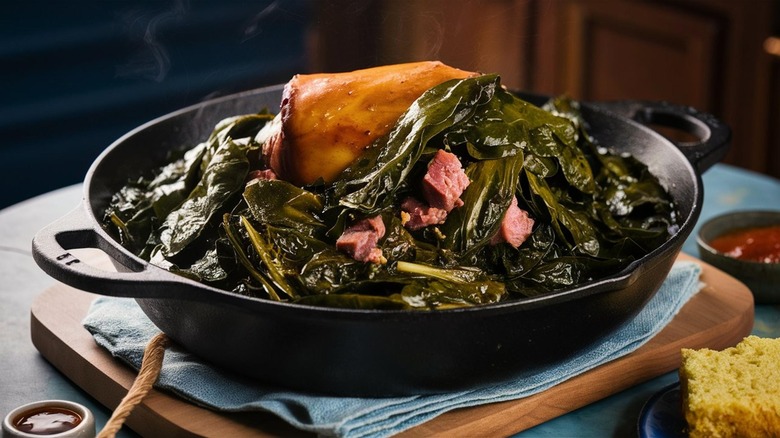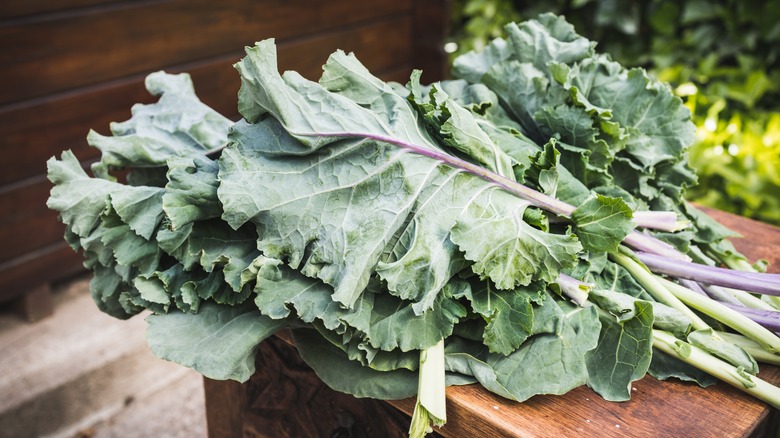The Biggest Mistake To Avoid When Making Collard Greens
Cooking a just-right pot of collard greens takes some just-right skills. Those often involve tweaks, touches, and techniques honed over generations, especially in the Deep South of America. That's where this vegetable reigns as side-dish royalty along with leafy cohorts in the Brassica family, including mustard and turnip greens. The collard plant grows prolifically in Georgia and South Carolina, the latter of which even designated collard greens the official state vegetable. There's no need to worry when slow-cooking "a mess" of them. Plenty of professional chefs and home cooks are happy to guide you down the right path.
For insights on collard greens and the biggest mistake to avoid when making them, we reached out to Southern-cooking expert and chef Art Smith of Reunion Restaurants. He graciously revealed one crucial faux pas, which centers on choosing the right leaves. "The mistake is using old, tough greens," explains Smith. "Always use young, tender collard greens or greens that have been kissed by frost."
Since collard is a cold-hardy vegetable, it tolerates autumn temperatures and even the annual first frost, which can impart a hint of sweetness to the greens. The leaves turn tougher and more bitter as the plant matures, which is why you should seek out the youngsters. Regardless of the season, look for dark green leaves with no blemishes, wilting, spotting, or discoloration. Smith also shares some tips for cutting, cooking, and finishing traditional Southern-style collard greens.
Prepping and cooking the best leafy collard greens
Collard greens earn a spot on countless down-home cafe menus, and they're a staple in African American cuisine across the country. But successfully making them at home goes far beyond choosing the best leaves. Chef Art Smith notes that some preliminary prep is necessary: "Tear them into medium pieces and remove the tough ribs." Then there's what's known as the pot likker.
For context, long-held African cooking customs are known to have traveled to the Americas via enslaved peoples, who adapted to circumstances and sparsely available ingredients. That led to customs such as making a "pot likker" from simmered ham hocks or other meat scraps. It's most often a method of choice now rather than necessity. Smith advocates this same beloved approach to collard greens. "Start by making a flavorful pot likker — use ham hocks, smoked turkey, or vegetable stock with onions, bell peppers, garlic, and celery," he says. Then add the greens and cook them "low and slow."
The primary flavors for Southern collard greens vary per chef, but they're often added at the end, after the ham hock or other smoked meats and liquids have permeated the greens during the slow simmer. The grand finale recommended by Smith can be surprising to those outside the Deep South, but you'll definitely want to "finish with vinegar, hot sauce, and brown sugar for that umami flavor."

